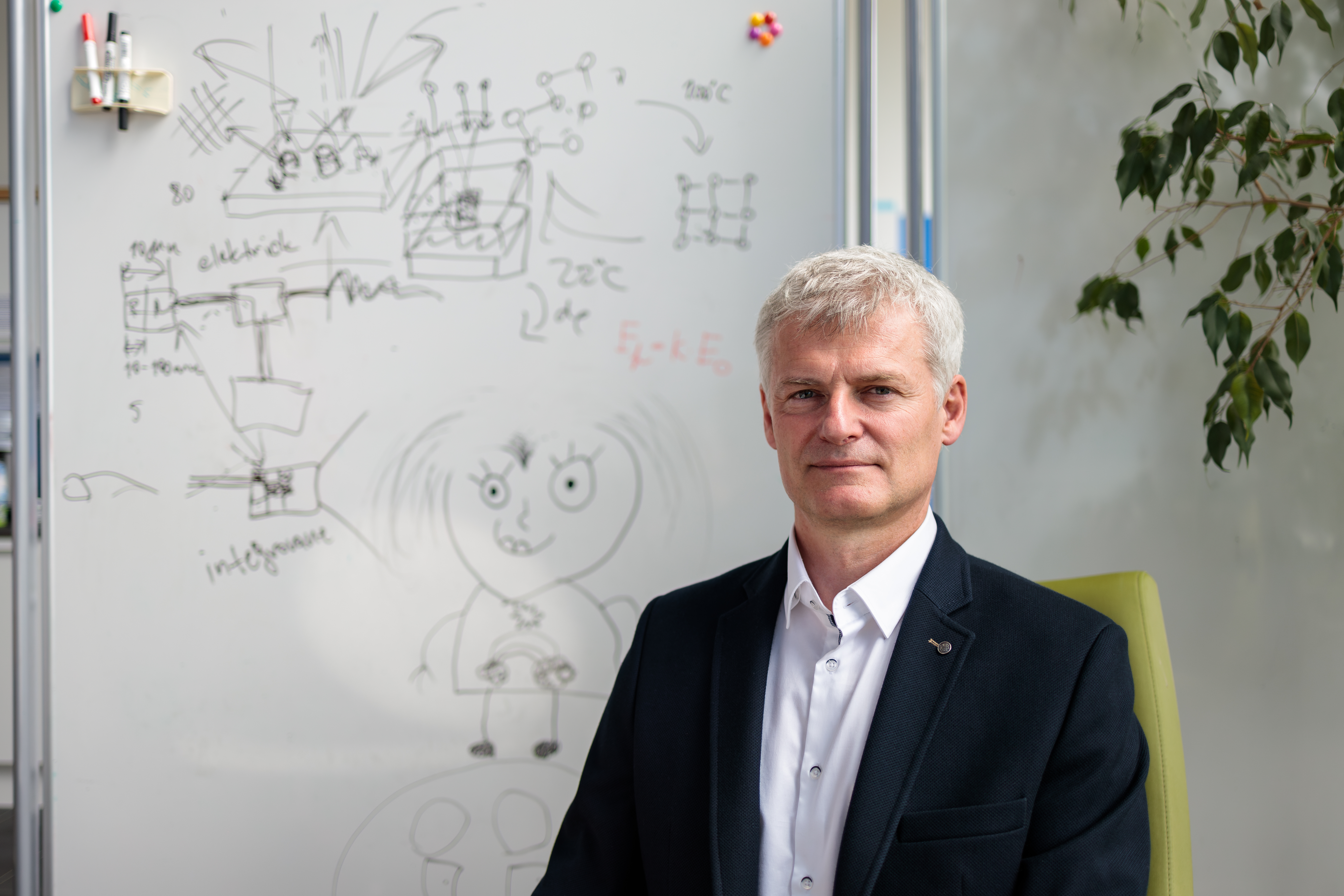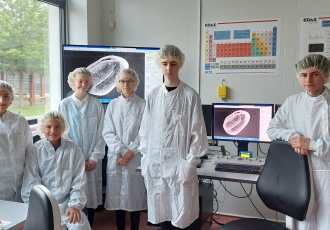5. June 2024
On one spring Saturday, the doors of CEITEC BUT opened to middle-school children within the BUT Junior programme for the seventh time. The BUT Junior educational programme is organised by BUT every year and it aims to bring the participants closer to the experience of studying at a university with a scientific and technical focus. At CEITEC BUT, the graduates take away valuable knowledge and experiences as well as chip samples and silicon wafer fragments.
BUT Junior is a project of Brno University of Technology designed for middle-school children (aged 10-15 – in the Czech educational system, they attend either primary or secondary school). The main goal is to familiarize participants with the environment of Brno University of Technology, its study facilities, modern technologies and the latest scientific knowledge. In this way, it seeks to develop pupils' and students' interest in studies, especially in science and technology.
BUT Junior simulates certain aspects of university studies. The programme begins with matriculation and ends with graduation, after which participants receive a diploma. Meetings are held once a month, always on a Saturday, including matriculation and graduation, for a total of 10 Saturday meetings. The activities are held at different faculties and units of the BUT, which take turns in preparing the programme. Lectures and lab exercises are specially tailored to match the level of knowledge the children have at that age and advance it. Information is conveyed in a clear manner, primarily through games and experiments.
 CEITEC BUT has been involved in the programme since 2018, and this year, it was held on Saturday, 18 May. Under the leadership of Stanislav Průša, the expert guarantor of popularization activities at CEITEC BUT, several colleagues, mainly from among our PhD students, were involved in its preparation. This year, we focused on introducing two important scientific departments at CEITEC BUT, namely the Micro- and Nanotechnologies research programme laboratory and the Materials Research applied to ceramic materials. After a motivational lecture by Petr Dvořák and Katarina Rovenská, the participants were divided into groups and attended a parallel programme at both of the above-mentioned workplaces. In the Micro- and Nanotechnologies laboratories, they experienced changing into overalls designed for use in cleanrooms, examined silicon wafers supplied by ONSEMI, used optical and electron microscopes to view simple electronic circuits created on silicon substrates or observed the structure of bee wings and eyes. They were surprised to discover that even bee eyes are hairy. In the ceramic laboratories. It was Lucie Pejchalová who coordinated the programme. Participants learned a lot of interesting facts about how to create, modify and use ceramics. Naturally, observation of ceramics with electron microscopes was an integral part of the event.
CEITEC BUT has been involved in the programme since 2018, and this year, it was held on Saturday, 18 May. Under the leadership of Stanislav Průša, the expert guarantor of popularization activities at CEITEC BUT, several colleagues, mainly from among our PhD students, were involved in its preparation. This year, we focused on introducing two important scientific departments at CEITEC BUT, namely the Micro- and Nanotechnologies research programme laboratory and the Materials Research applied to ceramic materials. After a motivational lecture by Petr Dvořák and Katarina Rovenská, the participants were divided into groups and attended a parallel programme at both of the above-mentioned workplaces. In the Micro- and Nanotechnologies laboratories, they experienced changing into overalls designed for use in cleanrooms, examined silicon wafers supplied by ONSEMI, used optical and electron microscopes to view simple electronic circuits created on silicon substrates or observed the structure of bee wings and eyes. They were surprised to discover that even bee eyes are hairy. In the ceramic laboratories. It was Lucie Pejchalová who coordinated the programme. Participants learned a lot of interesting facts about how to create, modify and use ceramics. Naturally, observation of ceramics with electron microscopes was an integral part of the event.
We were able to guide a total of 100 children through the labs and they left excited. “In addition, they each took home samples of chips and fragments of silicon wafers and that way, they could explain to their family and friends at school why a silicon wafer behaves differently from a glass plate when subjected to mechanical stress and breakage,” says Průša. He agrees with the other mentors and organisers that the event was a great success. “This is an exceptionally young target group, especially compared to our typical target groups, which are high-school students. While popularising engineering and science among the general public, we have noticed that it is the age group of middle-school children who seem to be the most receptive and willing to participate in the programme. Their enthusiasm and interest are particularly evident in the practical activities that we try to include in the programme as much as possible. From this point of view, in our opinion, BUT Junior is unique, targeted at the right age group, and we believe that the experience gained at such a young age will leave a significant trace in the participants,” concludes Průša.


 Share
Share



